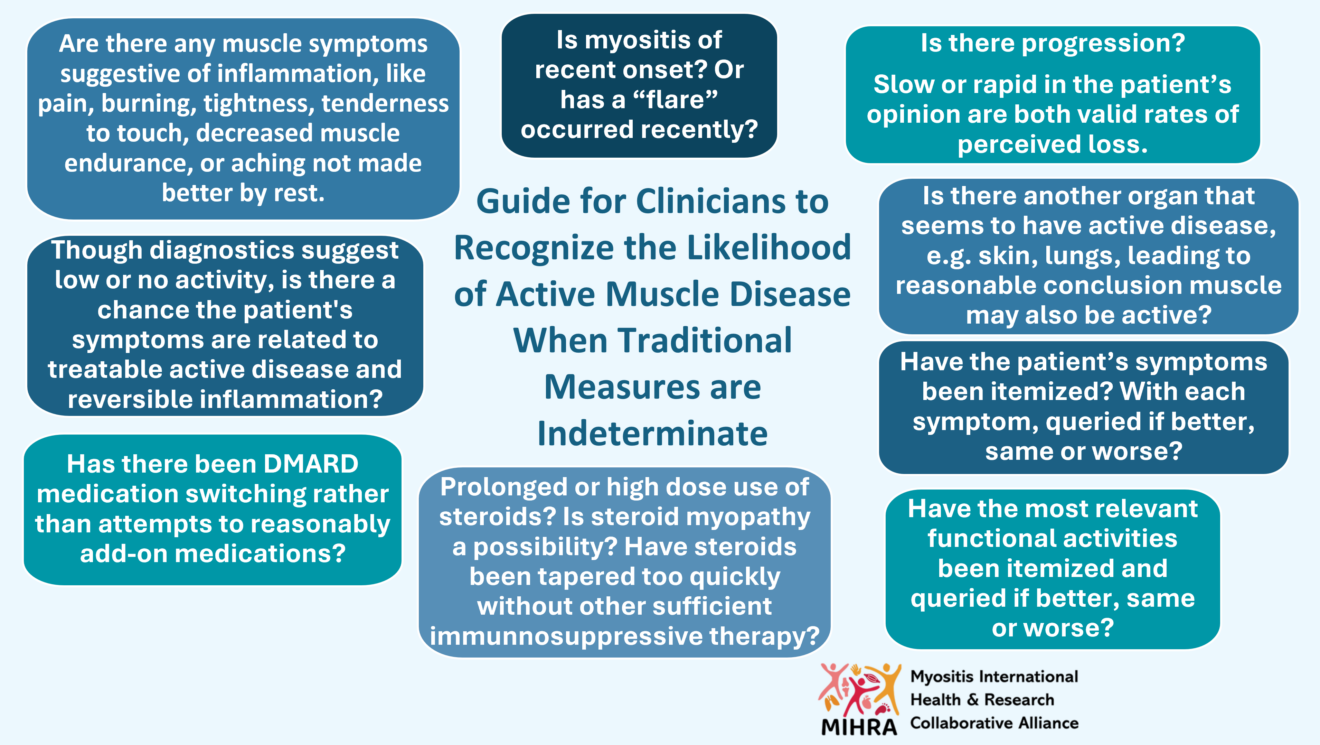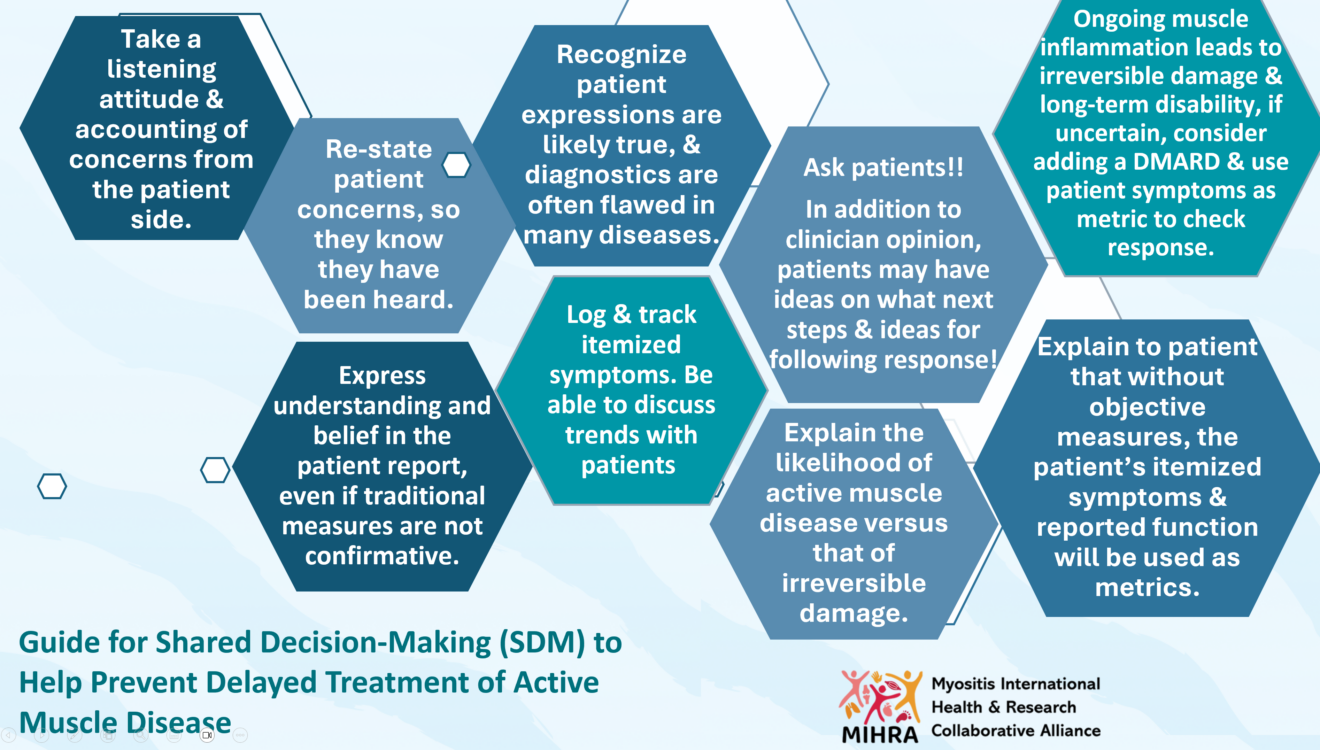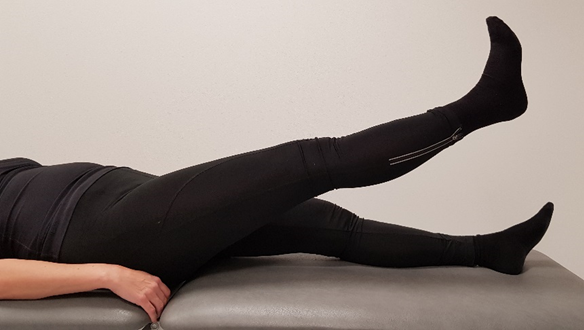Time loss may = muscle loss in active myositis diseases…
A critical conversation emerged among MIHRA patient partners across myositis diseases regarding a patient-voiced barrier to early detection, diagnosis and treatment that may be common for people living with myositis diseases.
Being hard-core athletes progressively losing muscle strength, they struggled to be heard – despite other signs of active disease. They hope that their stories and efforts might arm other patients with advocacy and at the very least, validate other patients’ lived experience and to recognize they are not alone.
The ‘MIHRA Heavy Lifters’ are now sharing their stories, research endeavors, and interventive self-advocacy strategies with international audiences at the Rare Disease Day Conference in February 2025 (see recording below) and at EULAR 2025 International Conference in June.

Does Over-Reliance on Manual Muscle Testing (MMT8) in Myositis Diseases Commonly Negate Patient Voice?
&
Does this Cause Treatment Delays Leading to Long-Term Disability?
The unique life circumstances of being hardcore athletes (some world champions) serve as an objective metric to substantiate the commonly voiced ‘every patient’ experience on the patient journey toward achieving a diagnosis and appropriate care in myositis diseases. Here, this international group shares stories of trying to be heard and trying get treatment. Even when they presented hardcore objective training metrics such as recorded declining trends of time and distance – their symptoms were not taken seriously.
These peer leaders and patient researchers are designing a qualitative research study under MIHRA’s Excellence in Clinical Care CORE to formally characterizethe disease burden that results from simply not being heard.
Guide for Clinicians to Recognize the Likelihood of Active Muscle Disease When Traditional Measures are Indeterminate

Guide for Shared Decision-Making (SDM) to Help Prevent Delayed Treatment of Active Muscle Disease

A PDF with these preliminary guidances are available for download here:
An Instructional on Manual Muscle Testing (MMT 8) – available for download:
The Functional Index 3 (FI-3)**
A Video of the FI-3 will soon appear here! But for now:
The FI-3 objectively measures muscle endurance by counting repetitions of a task in just 3 muscle groups counting with a metronome marking time:

Shoulder Flexion
0-60 repetitions
Using a 1 kg cuff (or no cuff with severe impairment)
Use a backless chair or stool
Neck Flexion
0-30 repetitions
Use a bench or flat treatment table without a pillow


Hip Flexion
0-60 repetitions
Heel should rise 40 cm above the table

**Rights for use of the Functional Index 2 (Fi-3) or Functional Index 3 (FI-3) or instruction of any version or part of these instruments are held solely by and fully asserted by the developers (Alexanderson H, Ernste F). Licensing for use in research or to provide any form of monetized instruction including consultancy is prohibited and restricted to the developers. There are no third parties that hold this right. Thus using or instructing upon or recording of the FI-2 or FI-3 without expressed permission and appropriate licensing is an infringement of intellectual property rights, and therefore constitutes a legal offense with pursuant liability for both user and any 3rd party attempting to monetize from the FI-2 or FI-3 in any way, shape or form. Contact the developers to arrange for licensing or to mediate repair of current or past liability transgressions.
MIHRA is compliant with licensing on all content referring to the FI-2 and FI-3 that appears on www.MIHRAfoundation.org.